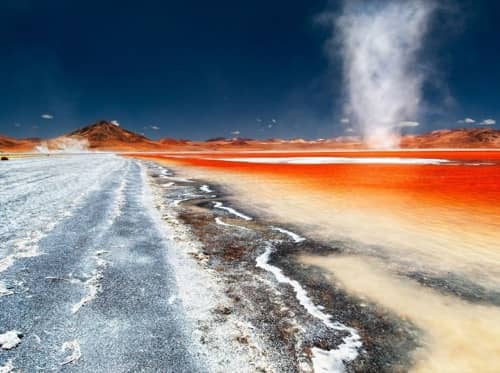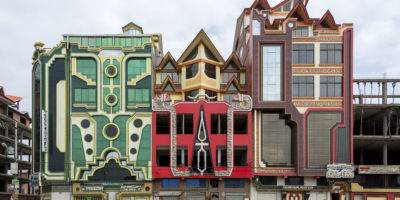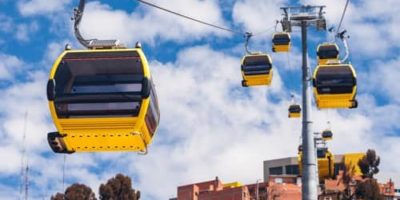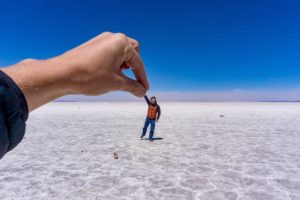Bolivia with its deep-rooted multiculturalism, offers several different regions with their own customs, gastronomies and geographies. While it is true that its capital, La Paz, is a fairly common starting point, it is also true that the rest of the cities have a lot to offer in terms of historical areas, beautiful sceneries and incredible adventures.
So without further ado, let’s start with the list of the 10 best tourist attractions in Bolivia:
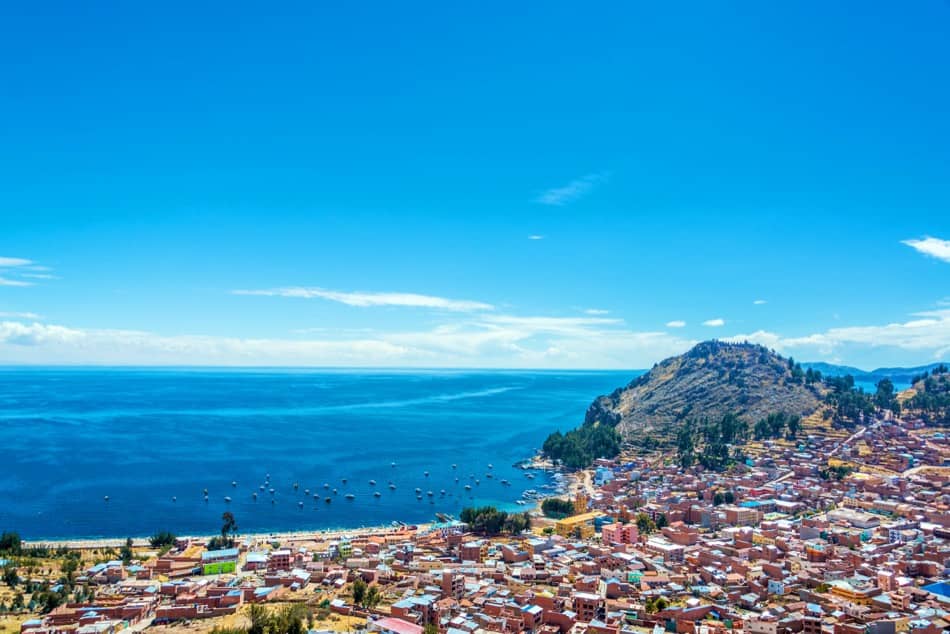
Contents
Lake Titicaca (La Paz)
Lake Titicaca is the highest navigable body of water in the world, being more than 8 thousand kilometers above sea level, near the town of Copacabana. It is a lake truly full of life, where you can find species that only inhabit this highland area.
A millenary culture has developed around the lake, in fact records of the Chiripa culture have been found through vessels and sculptures, which show the development that these native societies reached, being one of the archaeological sites of Bolivia.
The textile works of its Taquile Island, were named World Heritage of Humanity by UNESCO in 2005. In the lake you can ride a “Caballito de Totora” and in the mornings enjoy a splendid sunrise.
Here are some more posts about Lake Titicaca:
Can you fish in Lake Titicaca?
Best time to visit Lake Titicaca
La Paz
La Paz is the capital of Bolivia, the one with the highest altitude in the world and the one that concentrates the seats of the Powers of the State, the cultural and economic center of the country. Becoming one of the destinations to visit in Bolivia that you can not miss.
In this city you can find important places like the Basilica of San Francisco or the Metropolitan Cathedral; it also has the highest and longest urban cable car in the world, which is in charge of joining La Paz with El Alto, inaugurated in 2014. It is also worth mentioning that this city is considered one of the 7 wonder cities of the world.
Here are some posts about La Paz:
What To Do In La Paz, Bolivia?
Where To Stay in La Paz, Bolivia
Street Food in La Paz, Bolivia
Is La Paz, Bolivia Safe?
La Paz, Bolivia Nightlife
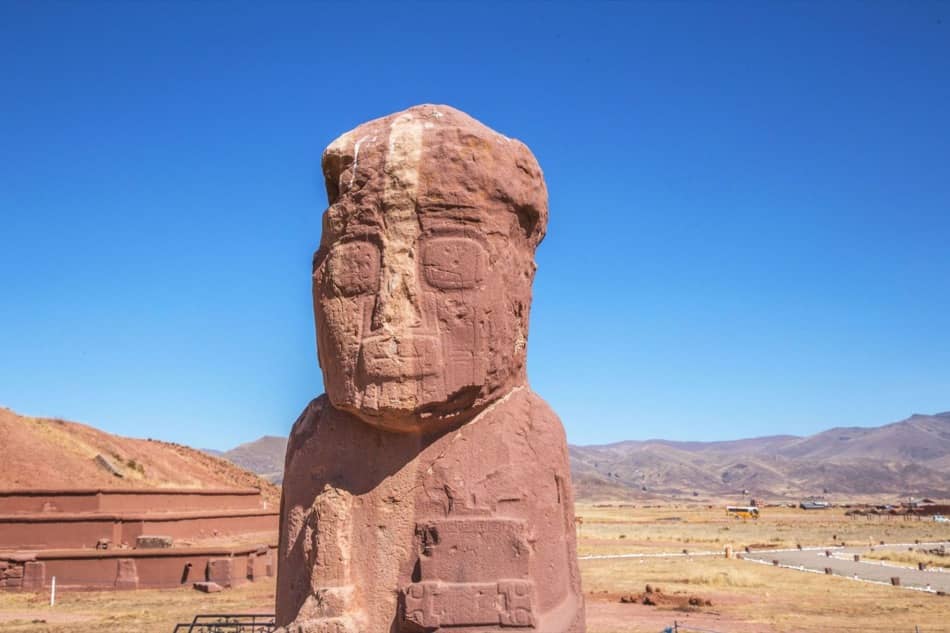
Tiahuanaco (Department of La Paz)
Located only 15 kilometers from Lake Titicaca, the city of Tiahuanaco (Tiwanaku) is known as one of the cultural attractions of Bolivia for being a spiritual and cultural center considered a World Heritage Site by UNESCO.
It is a settlement where numerous pre-Columbian buildings have been found, which show the development of the original populations; proof of this is the pyramid of Akapana or the Kalasasaya Temple, the Palace of the Sarcophagi or the ruins of Pumapumku.
This place has also fed the archeological treasure of Bolivia, with innumerable vessels and sculptures.
Here’s a post about visiting Tiwanaku.
Copacabana (Department of La Paz)
Copacabana is a city located right on the shores of Lake Titicaca, about 155 kilometers from La Paz. It is known for being home to one of the most deeply rooted Marian devotions in Bolivia, the Virgin of Copacabana.
Near the town you can find the shore of Lake Titicaca, one of the tourist places of Bolivia where you can practice water sports, being one of the activities that attracts more tourists during the year.
The best time of the year to go to Copacabana is between May and October, which is the time when it is easier to adapt to the climate. This city is also a good starting point to the Island of the Sun.
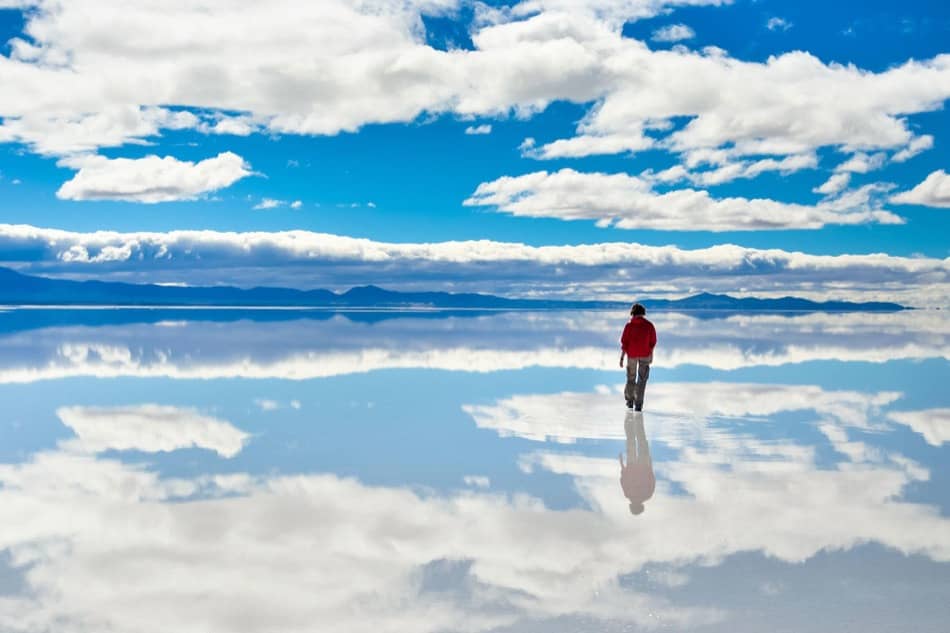
Uyuni Salt Flat (Potosi)
The Salar de Uyuni is one of the largest settlements in the world and one of the natural attractions of Bolivia. Located in the province of Daniel Campos, in the southwest of Bolivia, it is the perfect place to obtain spectacular photographs of the sky reflected in the salt flat.
It is recommended that you visit it between the months of January and March so that you can appreciate the innumerable quantity of animal species. And if you visit it in November you will appreciate three different species of flamingos that go there to nest.
Here are some more posts about the Salar de Uyuni:
Salar de Uyuni Facts
How Long to Spend in Uyuni
When Is Salar De Uyuni Covered With Water?
Imperial Village of Potosi (Potosi)
Potosi is a city in the south of Bolivia, and is right on the slope of Cerro Rico, a legendary mountain that accompanies this beautiful place. It currently has a little over one million inhabitants, more than half of whom are indigenous.
The history of this city goes back to the 15th century and includes many stories of the Bolivian independence process, some centuries later. Among the tourist sites, the Torre de la Compañía stands out, a convent that dates back to the 18th century, as well as a great network of museums.
In 1987 it was declared a World Heritage Site by UNESCO and is one of the historical places in Bolivia that you can not miss.
Here are some more posts about Potosi:
How To Get To Potosi, Bolivia
16 Best Things To Do in Potosi
How Many Days Should You Spend in Potosi?
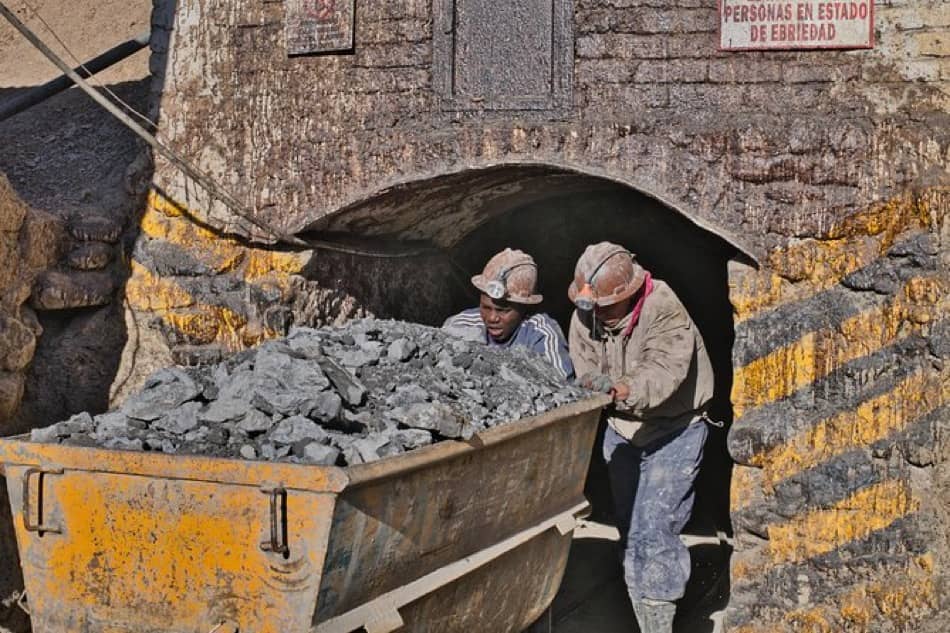
Isla del Sol (Copacabana)
The Island of the Sun is located in Lake Titicaca, has an area slightly larger than 9 square kilometers. To arrive is super easy from Copacabana, alone you should take a boat and already you will be able to enjoy one of the tourist destinations of Bolivia.
The Sun Island has some fresh water beaches where you can swim and enjoy the sun with much tranquility, it is also very common to take walks on the island to learn about its flora and fauna.
Tarija (Department of Tarija)
Tarija is a small city in the south of Bolivia, where about 200 thousand people live. It is characterized for being a zone where the wine activity stands out, that is to say the production of excellent wines, propitiated by the fresh climate all the year round.
Within the list of places to visit in Bolivia the city of Tarija stands out for being the center of important economic activities like the production of garlic, gherkins and flowers of which you will be able to enjoy in your visit for the place.
In addition you will be able to visit the San Jacinto dam, another of the tourist attractions of Bolivia that makes possible the production of the best local products, like milk.
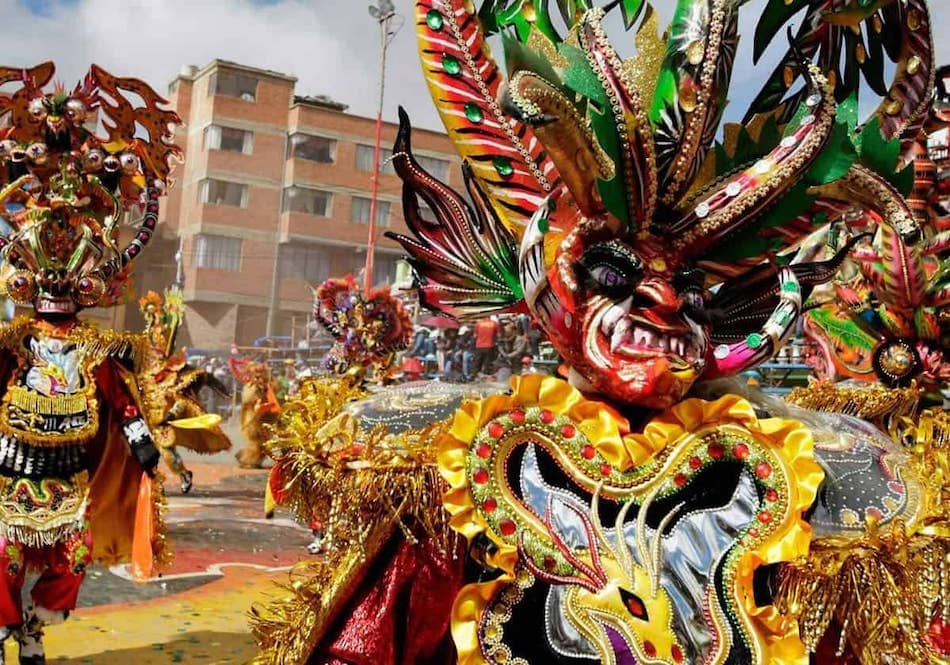
Oruro (Department of Oruro)
Oruro is considered the highest city in the world, it is located about 3,735 meters above sea level in the department of Oruro and is home to about 300 thousand people.
What makes this place famous is undoubtedly its carnival, declared as Oral and Intangible Heritage of Humanity by UNESCO in 2001.
It is a city rich in culture and tradition where you can learn about the most famous legends such as the Plagues and the Uros Yassoni. Also one of the places to visit in Bolivia that you cannot miss is the Lighthouse of Conchupata from where you will be able to appreciate the beauty of the city from its viewpoint.
Christ of the Concord (Cochabamba)
One of Bolivia’s tourist attractions is the Cristo de la Concordia, a 34-meter monumental statue that towers over the city on San Pedro Hill. It also has a pedestal of about 6 meters high, which gives it a total height of 40 meters.
The monument was built to commemorate the visit of John Paul II to the city in 1988, by architects and sculptors from Cochabamba. It is said to be higher than the Christ Redeemer of Rio de Janeiro in Brazil and you can reach the statue by climbing 1399 steps, from where you can admire a beautiful landscape.
Here are some more posts about Cochabamba:
Why Go To Cochabamba?
Where To Stay in Cochabamba
13 Best Tunari Peak Tours
10 is not enough? Then read on to discover more incredible places in Bolivia
Murillo Square (La Paz)
Plaza Murillo is considered the public space and one of the most important tourist destinations in La Paz, Bolivia since the Legislative and Government Palace is located around it. It is an ideal place to go as a family and walk around the city center.
In the square you will find several monuments that tell the history of the city as the Sentences to the Revolutionaries, the Monument to Murillo and the allegories that represent the seasons.
Licancabur Volcano (Potosi)
Licancabur Volcano, in Atacama language could be known as People’s Mountain, is located on the border between Chile and Bolivia, in Potosi, and although some experts say that volcanoes are never inactive, this one has millions of years without erupting.
It is one of the natural sites of Bolivia that offers really beautiful landscapes because of its almost perfect cone. The slopes of this great volcano are an area in protection, at least in the Bolivian zone, since it is right next to the Laguna Verde, a great water reservoir, where a great amount of flamingos come to life.
Laguna Verde (Potosi)
One of the destinations to visit in Bolivia is undoubtedly the Laguna Verde, a salt water reservoir in the heart of the department of Potosi. In which you will be able to enjoy the temperate climate and the mountain landscape.
The name of the place receives it from the greenish color of its waters, produced from the high concentration of magnesium and is part of the National Reserve of Andean Fauna Eduardo Abaroa.
In this beautiful lake you will be able to walk and climb small hills, ideal if you are an adventure lover. It is characterized by having a fairly strong climate so it is recommended that you stay hydrated and wear sunscreen.
Madidi National Park (Department of La Paz)
The Madidi National Park is located to the northeast of La Paz, and it contains a large number of deposits and water sources, headwaters of rivers that feed the hydrographic system of Bolivia.
It is a somewhat complicated geographical area for hiking, as there are steep mountains and deep canyons. In this park you will also be able to observe different zones of vegetation and spend a relaxed day enjoying nature.
It is one of the tourist sites of La Paz, Bolivia more visited by investigators to carry out studies on birds, fish, amphibians, reptiles and turtles in natural spaces.
Red Lagoon (Potosi)
One of the tourist destinations in Bolivia that you cannot miss is the Laguna Colorada, home of the Andean Flamingo. It is located in the department of Potosi, in the National Reserve of Andean Fauna Eduardo Abaroa.
It is a shallow lagoon, which can reach 35 cm and a little more than 50 square kilometers. Its main characteristic is its red color and in certain areas you can perceive a coppery and even brown color.
The climate is quite hot during the summer months although it usually reaches zero degrees during the early morning. During your visit to this lagoon, don’t forget to take it easy since being 4,200 meters above sea level can affect your physical resistance.
Death Road (La Paz)
The Camino de los Yungas, also known as the Camino de la Muerte, which connects La Paz with the town of Los Yungas, northeast of the capital, is a very interesting place in the Bolivian nation. Considered the most dangerous road in the world, it is also one of the favorite places in Bolivia for those who love adventure.
Nowadays there is a suitable road and it has been left mostly for the passage of cyclists. You can take an excursion from 7 in the morning taking a tour that lasts all day.
Incahuasi Island (Potosi)
The House of the Inca, is the translation in Quechua language for the Incahuasi Island, an insular zone that is in the Salar de Uyuni. It is one of the tourist places of Bolivia that has a peculiar landscape difficult to find in another part of the world.
To visit the place is advisable to have sunscreen because the reflection of the sun could be harmful to the skin, the caps are very useful. At night the temperature could drop a lot, so it is better to have a good coat.
The expeditions to this island are organized from the town of Uyuni, which is 100 kilometers to the east and that will guarantee you a complete tour of the island.
Fort of Samaipata (Santa Cruz)
The Fort of Samaipata is an archaeological site and one of the places to visit in Santa Cruz, Bolivia, a few kilometers from Samaipata.
In 1998 UNESCO declared it a World Heritage Site. For this reason it is considered one of the cultural attractions of Bolivia, since it was the main center for the celebration of ceremonies.
Nearby there are some vineyards and natural waterfalls with very cold water, where visits are usually organized by the agencies that take tourists.
Toro Toro National Park (Potosi)
Toro Toro National Park is a geological formation in the department of Potosi, in an area of 160 kilometers you can find a series of caves that date from the Mesozoic. It also has a great variety of animals such as foxes, Andean deer among others.
It is one of the ideal places in Bolivia to practice rappel, although it is always good to remember how remote this place is, about 140 kilometers from Cochabamba, the largest and closest urban center.
From Oruro you can easily go to this area of the country by car, you will have to go through several villages on the way. Lovers of paleontology prefer this place to carry out research.
Noel Kempff Mercado National Park (Santa Cruz)
Noel Kemff Mercado National Park is truly a natural paradise, named a World Heritage Site by UNESCO in 2000 for being one of the most important places in Bolivia.
It is a protected area located in Santa Cruz; it is the confluence of several rivers that flow into the Paucerna and the Verde, these in turn form the main attraction of the park, the Fawcett, Federico Ahlfeld and Arco Iris waterfalls.
In this place some acts of poaching and exploitation of mara and asai palm are registered. In the place there is a group called Mundo Perdido, which organizes excursions in the park.
Sajama National Park (Oruro)
Sajama National Park is a protected area that borders the Andes Mountains and the border with Chile, located in the department of Oruro.
It is one of the places in Bolivia with the lowest temperatures, especially at the Sajama volcano, which has been dormant for many years and reaches up to 6,500 meters above sea level.
Around it, there are some forests, the most well known of them, an area called Queñuas, where the trees with the highest altitude above sea level in the world grow, right there the wild fauna comes to life. In this area you can also see the Juchusuma geyser chain.
Akapana Pyramid (Department of La Paz)
About 70 kilometers from La Paz is the Pyramid of Akapana, a structure that has 7 terraces in pyramidal form and is about 18 meters high. It is believed that it was a site reserved for rituals by the Tiahuanacotas where the sun and other deities were worshipped.
Its name could mean “That Brings Light”. Despite being deteriorated by the passage of time, it is still considered one of the tourist attractions of Bolivia and that is why many tourists come to this area throughout the year.
Hedionda Lagoon (Potosi)
The Hedionda Lagoon is one of the important places in Bolivia that is located in the department of Potosi, it has this name due to the high concentration of minerals in the place, which are perceived as a very strong smell of sulfur, not for anything has earned this adjective of stinker.
It has an extension of at least 9 square kilometers and is home to Andean flamingos. There are some excursions that take tourists to this place, where they can capture excellent photographs. The days are generally sunny and when the afternoon arrives, the clouds descend and limit the view.
La Glorieta Castle (Sucre)
On the outskirts of the city of Sucre, you can find the Castle of the Glorieta, one of the tourist places of Bolivia that stands out for its hybrid, baroque and even Arabic architecture.
To arrive at the castle is not simple, the system of transport is not very friendly for the tourists and for that reason the best thing is to go in particular car.
On Mondays the castle will be closed, however the rest of the week you can receive visits from 9 in the morning until 4:30 in the afternoon. There are different guided tours during the day.
It has a tower similar to the Big Ben in London, plus two more towers, one called Prince and the other Princess. It has numerous paintings and halls, accompanied by an excellent artistic display.
Calacoto (La Paz)
Calacoto is located on the outskirts of La Paz and is one of the tourist places in Bolivia that receives a large number of tourists, for being a peaceful place where you can share with the mountain climate directly. Nearby is also the San Miguel Boulevard, an excellent point for shopping.
Some hotels exist that are ready to receive tourists at any time and time of the year, in addition it is possible to visit the cable car that is very near, an excellent trip to enjoy next to a good company.
Eduardo Avaroa National Andean Fauna Reserve (Potosi)
The National Reserve Eduardo Avaroa is one of the natural attractions of Bolivia that is hidden between the Andes Mountains, this is the area with more protection of Bolivia and in turn receives more visitors a year, at least 40 thousand tourists come to this place.
There is proximity with the borders of Chile and Argentina and in the landscape you can see volcanoes, geysers, thermal waters and some other natural attractions, worthy to observe and photograph.
The climate is totally winter throughout most of the year. It is possible to observe species like the Vizcacha de la Sierra and the Lagunas, all of which are characterized by their high concentration of salt water minerals.
Mint (Potosi)
Also known as the Casa Nacional de la Moneda, located in Potosí, it is the headquarters of a Bolivian museum and historical archive and was created by decree in October 1940, as part of a re-foundation of the Royal Mint of Potosí.
In this house rest all the machines that have been used in the colonial and republican era to mint coins in Bolivia and the important thing is that they are preserved in excellent shape.
It is one of the historical places of Bolivia where a great numismatic history is kept that during some centuries was fed by the Cerro Rico that offered tons of silver to mint coins.
Salvador Dali Desert (Potosi)
Even though Salvador Dalí never knew of the existence of this desert in the heart of Bolivia, right in the department of Potosí, some of this painter’s landscapes are very similar to the view offered by these semi-arid lands.
It is located about 4,700 meters above sea level and belongs to the National Reserve of Andean Fauna Eduardo Avaroa. This is why it is known as one of the most visited natural attractions of Bolivia.
Despite the fact that it is dry almost all year round and has a high salinity, there are certain trees that have adapted to these conditions. You can also observe up to 80 species of birds and pumas, foxes and llamas.
Cal Orcko (Sucre)
Cerro de Cal, is the Quechua translation for Cal Orcko, is a place that dates from the paleontological. It is one of the archaeological sites of Bolivia where it was demonstrated the presence of certain species that were believed not to have inhabited South America, such as Ankylosaurus or Tyrannosaurus.
It is very close to the city of Sucre and right there up to 5 thousand dinosaur footprints have been found, belonging to 294 species; it is by far the place in the world where the most marks of the passage of these immense reptiles have been found.
In 2006 the Cretaceous Park was opened, where you will have the opportunity to see the existence of similar replicas of the dinosaurs that lived there. You can visit it every day from 9:00 am to 5:00 pm.
Jesuit Missions (Santa Cruz)
The baroque style of the temples in the Jesuit Missions attracts a large number of tourists who come from Sucre about 6 hours from La Paz, for being one of the tourist places of Bolivia. Here you will be able to know religious architectures, that conserve art and culture of the colonial time.
They are a series of chapels that were used to evangelize to the indigenous population and that were attracting by their great beauty. San Javier was the first one in being constructed, in the year 1691. During its history they have received renovations that help them to remain standing to continue receiving Catholic parishioners.
St. Francis Basilica (La Paz)
The Cathedral of San Francisco de Asís is located in the center of La Paz and is part of a Catholic convent that receives a considerable number of parishioners annually. It was built between the 16th and 18th centuries, since it suffered some repairs and reconstructions in its process.
It is one of the historical places of Bolivia that possesses a mestizo baroque style or also known as Andean baroque, to those who visit the temple, it calls powerfully the attention its central ship with vaulted style and its facade of columns in carved stone.
It is one of the historical places of Bolivia that possesses a mestizo baroque style or known also as Andean baroque, to those who visit the temple, it calls powerfully the attention its central ship with vaulted style and its facade of columns in worked stone.
Basilica of Our Lady of Copacabana (Copacabana)
The Basilica of Our Lady of Copacabana is in the department of La Paz and annually hosts the largest Marian devotion in Bolivia. It has a Renaissance style and was built in 1550, with some later remodeling, repairs and extensions.
It is one of the places in Bolivia extremely showy, in addition it has a really wide collection of religious objects. Nowadays it is surrounded by more modern constructions and the structure has suffered changes with the passage of time.
The veneration of the Virgin of Copacabana began in 1583 and has extended to several countries in South America; in fact, several sites in Brazil, Argentina and Colombia bear this name.
Garrapatas Canyon (Potosi)
The Tick Canyon is a site in Toro Toro located in the department of Potosi, which borders the Garrapatal River, an area of stones sculpted by the passage of water and that seem to be placed there in a capricious way.
It is one of the tourist destinations in Bolivia where you can practice extreme sports, such as rappelling, rafting or climbing. The reddish stone will be able to offer some excellent photographs for its visitors.
It is necessary to revise the climate and the quantity of water fallen in the place, since suddenly they could appear floods that attempt against the life of the tourists.
Biosphere Station of Beni (Department of Beni)
The Biosphere Reserve and Biological Station of Beni, is part of the protected areas of Bolivia, created on October 5, 1982 to protect the flora, fauna and natural resources of an area of immense biodiversity.
It is a kind of plain located in the department of Beni and extends some 1,350 kilometers. Here you can observe a great variety of species such as birds, reptiles, caimans and turtles.
Being one of the most visited natural sites in Bolivia, there is a site for the reception of tourists where there is capacity for some 40 people. There are five types of tours to get to know this plain.
Bolivia: More than you expect
Bolivia has a record of 66 ecosystems out of the 112 existing in the world, which places it among the 15 countries with the greatest biodiversity. This is the reason why it invites a large number of tourists from all over the world to visit this great country.
The culture of the best tourist places in Bolivia is maintained through time and is another attraction that makes the heart of South America a vibrant country for tourism. In spite of being one of the few countries in the world that does not have an outlet to the sea, it is currently disputing a small portion that allows it to have its own ports on the high seas.
Bolivia is a country of great scientific interest, with a great amount of natural resources to be exploited, but that still remain intact because many of them are located in the interior of the Andes.
